- Home
- TV History
- Network Studios History
- Cameras
- Archives
- Viewseum
- About / Comments
Skip to content




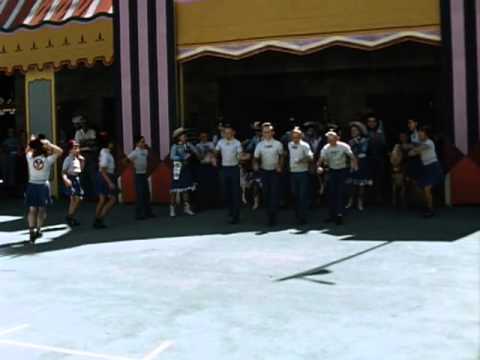

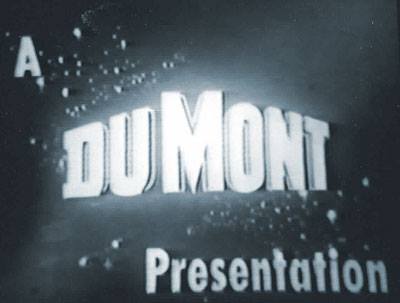

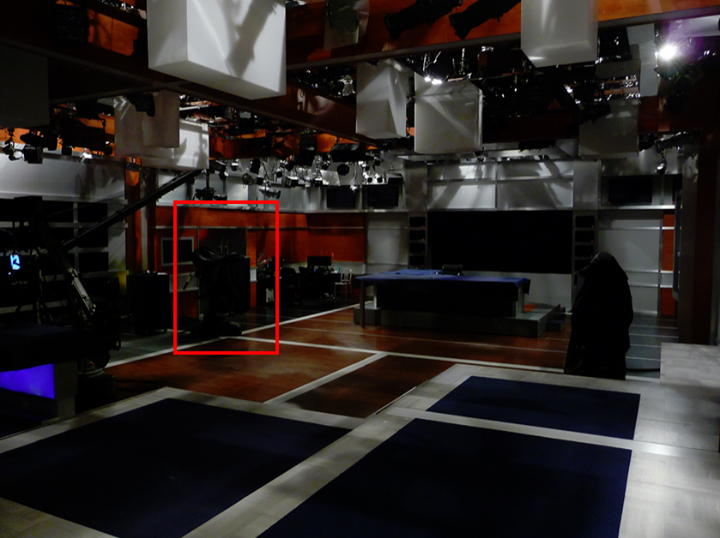

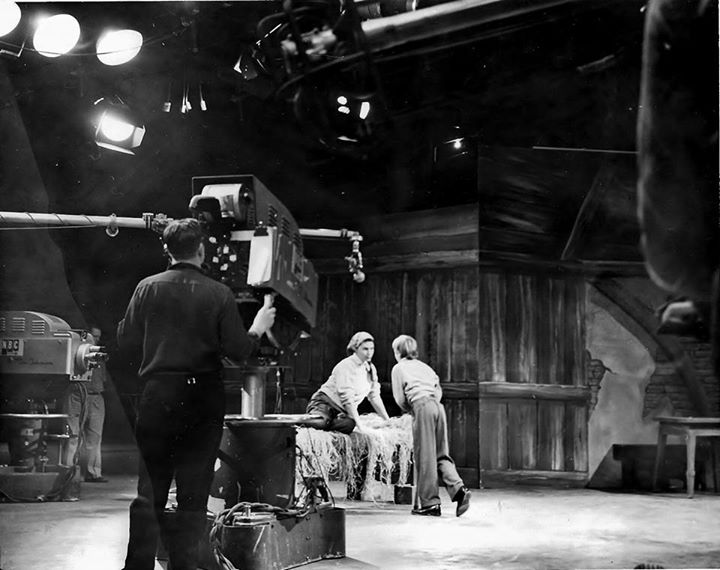

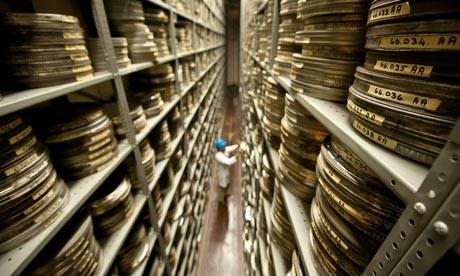

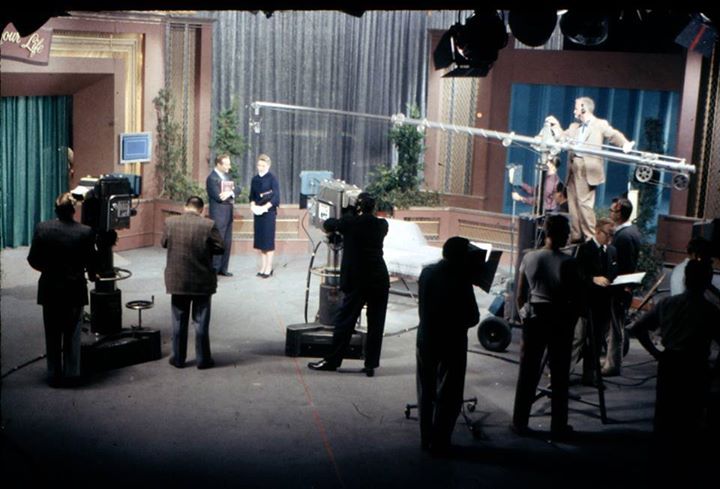

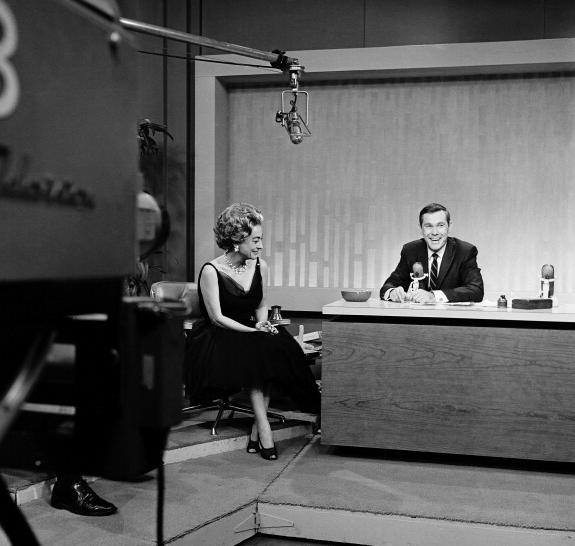

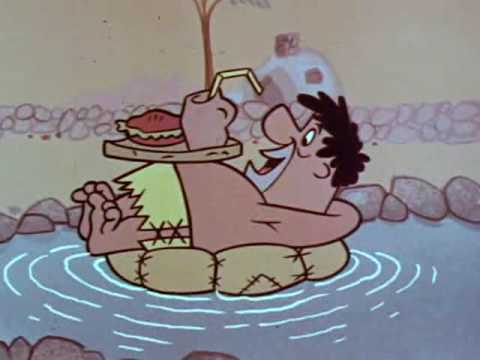

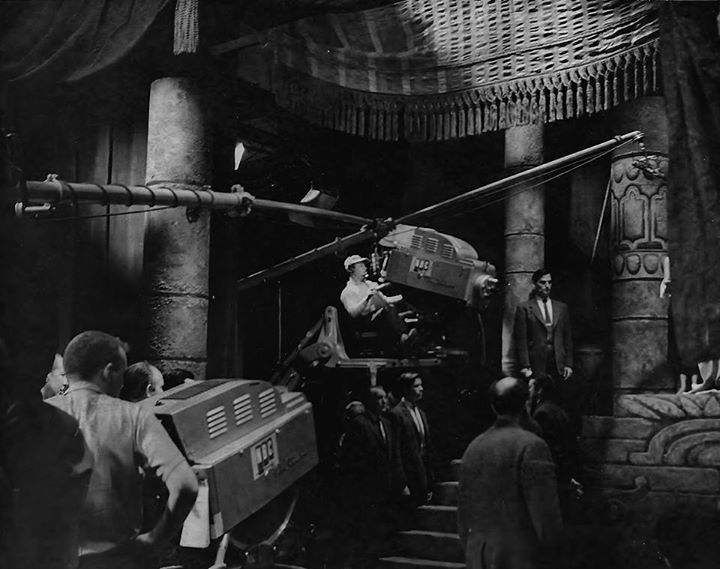

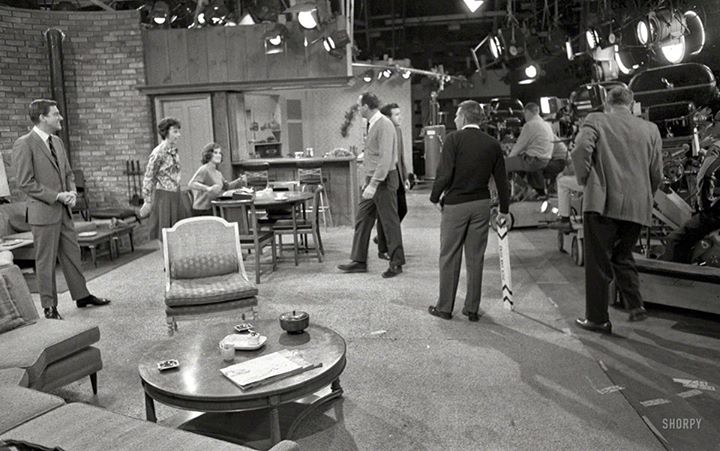

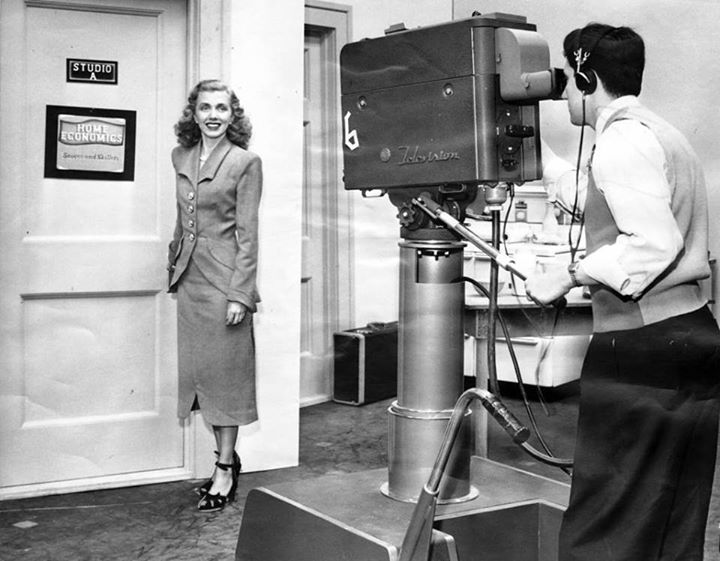

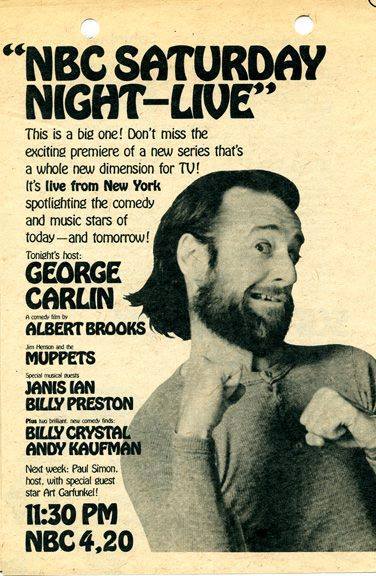



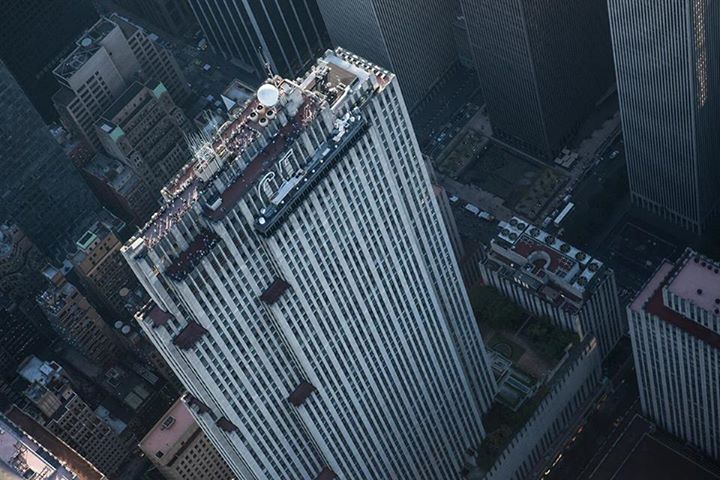



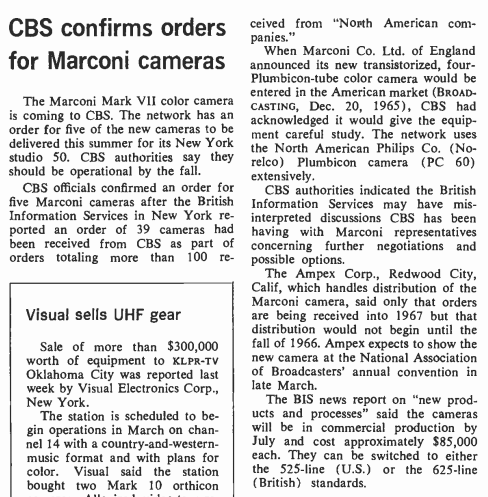

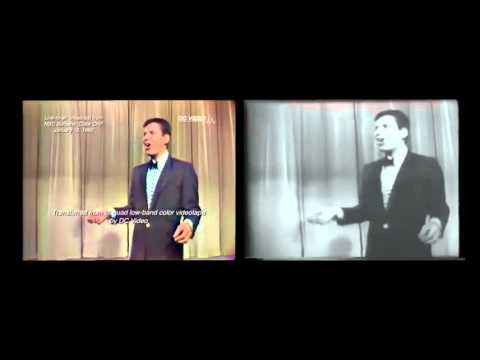

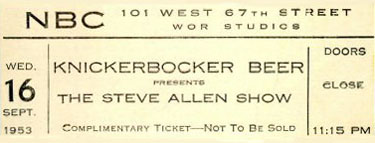

Posts in Category: TV History
Page 57 of 136
« Previous
1
2
3
4
5
6
7
8
9
10
11
12
13
14
15
16
17
18
19
20
21
22
23
24
25
26
27
28
29
30
31
32
33
34
35
36
37
38
39
40
41
42
43
44
45
46
47
48
49
50
51
52
53
54
55
56
57
58
59
60
61
62
63
64
65
66
67
68
69
70
71
72
73
74
75
76
77
78
79
80
81
82
83
84
85
86
87
88
89
90
91
92
93
94
95
96
97
98
99
100
101
102
103
104
105
106
107
108
109
110
111
112
113
114
115
116
117
118
119
120
121
122
123
124
125
126
127
128
129
130
131
132
133
134
135
136
Next » 

Saturday Night Live Transcripts
On October 3, 2014
- TV History
A Treasure For SNL Fans…Save And Bookmark This Site
http://snltranscripts.jt.org/
This is the most complete and interesting ‘Saturday Night Live’ sites I’ve ever seen. If you want a full account of the show’s history, you’ll find it here. Enjoy and Share! – Bobby Ellerbee
Saturday Night Live Transcripts
Saturday Night Live Transcripts contains over 4,000 transcripts of SNL’s most popular sketches. Updated weekly with new transcripts, from the early days of the Not Ready For Prime Time Players to its current incarnation.
Exclusive New Photos From NBC Brooklyn…3 of 4
On October 3, 2014
- TV History
Exclusive New Photos From NBC Brooklyn…3 of 4
Thanks to Peter Katz, here is another of four photos taken on the set of ‘Amahl And The Night Visitors’ at NBC Brooklyn.
This was first performed on December 24, 1951 in Studio 8H where it was broadcast live as the debut production of the ‘Hallmark Hall of Fame’. It was the first opera specifically composed for television in America and became a holiday staple at NBC.
For its first three telecasts, the program had been presented in black-and-white, but beginning in 1953, it was telecast in color. Because it was an opera, it later began to be scheduled as an afternoon television program, rather than shown in prime time as had been done in its first few telecasts. For years, Amahl was presented live annually, but in 1963 it was videotaped, but accidentally erased and redone in 1964. This series of four photos were taken in 1954 during the rehearsals at NBC Brooklyn, shortly after it went into service on November 12, 1954.
Thanks to Peter Katz for sharing these with us. Enjoy and share! – Bobby Ellerbee


Ultra Rare…Color Footage Of The Mouseketeers Debut
On October 3, 2014
- TV History
Ultra Rare…Color Footage Of The Mouseketeers Debut
On October 3, 1955 ‘The Mickey Mouse Club’ debuted on ABC, but the nation first met the Mouseketeers in the live broadcast of the opening of Disneyland in July. Here is recently discovered color footage of the rehearsal of the July 17 broadcast cut into the b/w footage. Enjoy and Share! – Bobby Ellerbee
https://www.youtube.com/watch?v=ge3QXyxwsGk
The Mousekateers appeared in public for the first time, on the day of Disneyland’s opening, on July 17th, 1955..while this appearance was televised in black …
October 2, 1946…Network Television’s First Soap Debuts…Or Did It?
On October 2, 2014
- TV History
October 2, 1946…Network Television’s First Soap Debuts…Or Did It?
‘Faraway Hill’ debuted on The Dumont network on this date 68 years ago today and is considered by many to be the first soap opera on network television, in that the shows were produced and broadcast on more than one television station. In this case that would be Dumont’s New York and Washington stations.
BUT, there exists tales of another television soap opera, a program that may have aired for about 13 episodes in the summer of 1946, premiering just before ‘Faraway Hill’.
A television history book written by Tim Brooks and Earle Marsh, noted that prior to the broadcast of ‘Faraway Hill’, W2XB (which later became WRGB) in Schenectady may have aired a 13 episode drama called ‘War Bride’. The photo below is from the Schenectady Museum and is labeled “War Brides, June 7, 1946”.
NBC’s W2XBS and GE’s W2XB linked up to form the first network of television stations in 1943 and there are scattered reports of an early co broadcast of a show called ‘War Bride’ on that two city network.
Unfortunately, a lot of television’s early history is lost to the ages but often, bits and pieces of information like this help us form our conclusions and to me, it seems that ‘War Bride’ is actually the first network television soap opera. Most of the details of this article come from Chuck Miller who discovered the ‘War Bride’ photo and our thanks to him for his writings, effort and research. Enjoy and share! -Bobby Ellerbee
A New Angle For ‘NBC Nightly News’…Studio 3B Changes
On October 1, 2014
- TV History
A New Angle For ‘NBC Nightly News’…Studio 3B Changes
We’ve had some questions on this lately, so here’s what I know about the changes on ‘Nightly News’.
In the top photo, we see the location of the news desk as it has been for a few years now…at the top end of Studio 3B. The red box in the top photo shows the studio door to help you get your bearings.
Last week, the desk and set was moved to the other end of the rectangular studio. Now, instead of being on an end wall, the desk has it’s back to the long wall and is in the back corner where the old ‘Rock Center’ set was. The bottom photo was taken from just in front of the studio door and the red box shows approximately where the desk is now. On the left In this photo, you can see where the desk was (covered).
From what I’ve heard and saw last night in the Ben Affleck piece, the midway point between the old desk location and the new location is now being used as an interview space. Enjoy and share! – Bobby Ellerbee
Exclusive New Photos From NBC Brooklyn…2 of 4
On October 1, 2014
- TV History
Exclusive New Photos From NBC Brooklyn…2 of 4
Thanks to Peter Katz, here is another of four photos taken on the set of ‘Amahl And The Night Visitors’ at NBC Brooklyn. After posting the first one yesterday and mentioning the show was finally recorded in color in 1963, we found out that someone accidentally erased that master and it had to be redone again in 1964.
This was first performed on December 24, 1951 in Studio 8H where it was broadcast live as the debut production of the ‘Hallmark Hall of Fame’. It was the first opera specifically composed for television in America and became a holiday staple at NBC.
For its first three telecasts, the program had been presented in black-and-white, but beginning in 1953, it was telecast in color. Because it was an opera, it later began to be scheduled as an afternoon television program, rather than shown in prime time as had been done in its first few telecasts. For years, Amahl was presented live annually, but in 1963 it was videotaped, but accidentally erased and redone in 1964. This series of four photos were taken in 1954 during the rehearsals at NBC Brooklyn, shortly after it went into service on November 12, 1954.
Thanks to Peter Katz for sharing these with us. Enjoy and share! – Bobby Ellerbee
A Story Of TV History Treasure…LOST
On October 1, 2014
- TV History
A Story Of TV History Treasure…LOST
For a year and a half on what was then WRCA, Bill Cullen hosted a local (New York) fifteen minute television show called ‘Inside NBC’…here is a description of just a few of the shows. It would be fantastic to see all of this backstage stuff, BUT…sadly, as far as I know, all of this is gone. If you know more, please tell us.
Monday, December 12, 1955 [DEBUT] Bill Cullen hosts this 15-minute program which spotlights NBC’s personnel, history, features, and entertainment. NBC cameras pick up rehearsals in progress, previewing shows to appear the same evening or later that week.
Monday, December 19, 1955 Viewers see a Playwrights 56 rehearsal in action. Bill Cullen interviews producer Fred Coe, director Arthur Penn, and stars Kim Stanley and Louis Jean Heydt.
Friday, December 23, 1955 Bill Cullen visits David Aiken as he is made up for his role in Sunday’s Alcoa Hour production of Amahl and the Night Visitors. The cameras also pick up a rehearsal of Babes in Toyland to be seen on Max Liebman Presents.
Monday, December 26, 1955 Bill Cullen tours the Home studios. Guest: Dick Linkroum, Home’s exec. producer.
Friday, December 30, 1955 Bill Cullen’s guest, Mary Martin, discusses the forthcoming Peter Pan.
Friday, January 6, 1956 The operation of the NBC news department is explained through interviews and films. The cameras pick up a rehearsal Ken Banghart’s news program.
Monday, January 9, 1956 Bill Cullen visits NBC’s special effects dept. to show how fog, rain, snow, etc. are made for TV.
Friday, January 13, 1956 Les Colodny, director of NBC’s comedy development program, explains and tells of plans for ’56. He introduces an act by some new talent.
Monday, January 16, 1956 Richard Linkroum, executive producer of Home, conducts a tour of the Home studios.
Monday, January 23, 1956 Tex Antoine explains the preparation of his weather programs. Bill Cullen interviews Henry Salomon, producer of Circle Theater’s Nightmare in Red, to be repeated tomorrow evening.
Friday, January 27, 1956 Bill Cullen takes viewers behind the scenes of radio’s Monitor. Guest will be Gene Rayburn.
Monday, January 30, 1956 The NBC Technical Operations Department demonstrates the transmission of a TV picture from coast to coast. Cameras pick up a rehearsal of Milton Berle’s show from Hollywood, Cal. Bill Cullen.
Friday, February 3, 1956 Host Bill Cullen and Maurice Evans discuss this Sunday’s Hallmark Hall of Fame production of The Good Fairy, starring Julie Harris. Chet Huntley of the NBC News Department previews Outlook, a news program which debuts this Sunday. Special guest: J. Fred Muggs.
Monday, February 6, 1956 Bill Cullen visits Sid Caesar at his office and studios.
Friday, February 10, 1956 Bill Cullen reviews the first NBC telecast, April 30, 1939. This was the NBC special events pickup of the opening of the World’s Fair at Flushing Meadows.
Monday, February 27, 1956 The cameras switch to Hollywood to pick up a rehearsal of Tuesday’s Matinee Theater production, A Tall Dark Stranger. Its star, Zsa Zsa Gabor, and host John Conte are guests. Bill Cullen, in New York, does a feature on the early days of NBC news coverage.
Friday, March 2, 1956 The cameras switch to the RCA Hall of Progress in Camden, N.J., which holds electronics equipment developed during the past century. Bill Cullen hosts.
Monday, March 5, 1956 Guest: Stockton Hellfrich of NBC’s Continuity Acceptance Dept. Bill Cullen shows Martha Raye Show in rehearsal, via film.
Friday, March 9, 1956 Host Bill Cullen highlights NBC’s coverage of the Presidential campaign. He also interviews Laurence Olivier.
Monday, March 12, 1956 Ike Kleinerman, film editor of Wednesday’s Project 20 production, explains how the film was procured and edited.
Friday, March 16, 1956 Host Bill Cullen discusses the presentation of the TV “Emmy” Awards.
Monday, April 16, 1956 Bill Cullen conducts a remote program with WRCA-TV’s new mobile unit.
Monday, May 7, 1956 Host Bill Cullen and his special guest, Lee Ann Meriwether, conduct a quiz show. Contestants are the five finalists of the “Miss NBC” contest.
Friday, May 18, 1956 Bill Cullen is host to Thomas B. McFadden, general manager of WRCA-TV and Ray Owen from the reporting staff of WRCA’s Pulse. Owens discusses Pulse’s technique for covering news.
That is a pretty amazing trove of treasure…and only a small sample of the ‘Inside NBC’ shows Cullen hosted. I think these are all gone but hope someone knows if they survive. – Bobby Ellerbee
October 1, 1952…’This Is Your Life’ Debuts On NBC
On October 1, 2014
- TV History
October 1, 1952…’This Is Your Life’ Debuts On NBC
‘This Is Your Life’ had its genesis in radio as a good natured gesture on the ‘Truth or Consequences’ show in 1946. General Omar Bradley asked Ralph Edwards to do something to help returning World War II veterans, especially paraplegics. He said they were depressed and reluctant to see anyone, including their families. Ralph’s ingenious solution was to profile a returning hero on his radio program, which created a “voice” for all veterans. Lawrence Tranter was selected as the first honoree. His story was told by surprising him with people from his past – family, friends, school teachers, and others in an emotion-filled episode. Knowing Tranter had ambitions to be a watch repair technician, the show arranged for him to attend the Bulova School of Watchmaking in New York.
‘This Is Your Life’ began its official TV run on October 1, 1952 with the life of Laura Stone Marr, mother of actor Milburn Stone who we best remember as “Doc” on Gunsmoke. An instant hit on NBC, the show virtually stopped America in its tracks every Wednesday night and ran till 1961.
This was among the first NBC series to originate from California, so in order to get this on the air in the east in early prime time the show had to start in late afternoon with a kinescope broadcast for the west coast. The reason the east rarely ran a kine was that most of the nation’s population was there…the most viewers got the best quality.
The photos below are from the 1958 Francis Farmer episode and were taken by the father of Jim Early. Thanks to Jim for sharing them with us as these are the only known color photos of the show. Enjoy and share! – Bobby Ellerbee
October 1, 1962…’Tonight’ With Johnny Carson Debuts
On October 1, 2014
- TV History
October 1, 1962…’Tonight’ With Johnny Carson Debuts
At the clip link above is the audio of the first 3 minutes of the debut show with Groucho Marx introducing Johnny. The video has been lost but below, we have the next best thing…rare pictures from that night!
The guests that night in NBC’s Studio 6B were Joan Crawford, Mel Brooks, Tony Bennett and Rudy Vallee. We are fortunate to have photos of all but Mel Brooks and I’ll make some comments on the pictures that you’ll see when you click on them individually.
Notice in the audio Carson mentions two intros…one for the east and one for the rest of the country. This is a bit confusing, but here is what he was referring to and why.
Carson inherited from Paar a show that was 1 3/4 hours (105 minutes) long. The show actually had two openings, one starting at 11:15 p.m. and included the monologue, the other that listed the guests and re-announced the host, starting at 11:30. The two openings gave affiliates the option of airing either a fifteen minute or thirty minute local newscast preceding ‘Tonight’, but remember…even the network evening news was only fifteen minutes long till 1963.
As I understand it, this actually started with Steve Allen. As we saw last week, ‘The Steve Allen Show’, sponsored by Knickerbocker Beer on WNBT in New York, was a big hit. This was the predecessor to ‘Tonight’ and when the show moved to the NBC network and The Hudson Theater, they wanted the loyal local audience to follow the show to the network, so they give Allen fifteen minutes to do some bits that were more for the local NYC area audiences.
The thinking was that most of the country may not “get” the local humor, so Gene Rayburn re introed Allen at 11:30 for stations to join in after that. At that mark, Allen continued with a broader but short monolog.
Somewhere along the line, the local humor emphasis went away in that 11:15 segment and it became the broader monolog but national viewers saw the show without any monolog if stations joined at 11:30. This is all quite murky and there is very little written on this, but we do know that Carson never liked this.
As more affiliates introduced thirty minutes of local news, Carson’s monologue was being seen by fewer people. To rectify this situation, Ed McMahon and Skitch Henderson co-hosted the first fifteen minutes of the show between February 1965 and December 1966 without Carson, who then took over at 11:30. Finally, because he wanted the show to start when he came on, at the beginning of January 1967 Carson insisted the 11:15 segment be eliminated and it was. Enjoy and Share! – Bobby Ellerbee


September 30, 1960…’The Flintstones’ Debuts On ABC
On September 30, 2014
- TV History, Viewseum
September 30, 1960…’The Flintstones’ Debuts On ABC
This short clip is what was used to sell the ‘The Flagstones’ to ABC and it’s sponsors. Before it came to air, the name had to be changed for legal reasons as Flagstone was a trademarked name.
This pilot was essentially a demo reel of what the show would look like. Note the grease pencil marks on the film, that depicts scenes from the pilot that would later be used in “The Swimming Pool” episode. It was shown to potential sponsors in the spring of 1960 with Miles Laboratories and R.J. Reynolds buying in as sponsors on the strength of this presentation. Daws Butler did both Fred and Barney’s voices; Jean Vander Pyl was Wilma and she continued as in that part in the series and June Foray was the voice of Betty.
In the series, Alan Reed was the voice of Fred, Mel Blanc was the voice of Barney, Jean Vander Pyl was Wilma and Bea Benaderet was Betty. The show was broadcast from September 30, 1960 till April 1, 1966. Although done in color, it did not air in color on ABC till 1962, after ‘The Jetsons’ debuted in color.
Exclusive New Photos From NBC Brooklyn…1 of 4
On September 30, 2014
- TV History
Exclusive New Photos From NBC Brooklyn…1 of 4
Thanks to Peter Katz, here is the first of four photos taken on the set of ‘Amahl And The Night Visitors’ at NBC Brooklyn.
If you remember from the article here a few weeks back, this was a one act light opera NBC had commissioned. It was first performed on December 24, 1951 in Studio 8H where it was broadcast live as the debut production of the ‘Hallmark Hall of Fame’. It was the first opera specifically composed for television in America and became a holiday staple at NBC.
For its first three telecasts, the program had been presented in black-and-white, but beginning in 1953, it was telecast in color. Because it was an opera, it later began to be scheduled as an afternoon television program, rather than shown in prime time as had been done in its first few telecasts. For years, Amahl was presented live annually, but in 1963 it was videotaped. This series of four photos were taken in 1954 during the rehearsals at NBC Brooklyn, shortly after it went into service on November 12, 1954.
Thanks to Peter Katz for sharing these with us. Enjoy and share! – Bobby Ellerbee
3 Fantastic Dick Van Dyke Set Shots…
On September 30, 2014
- TV History
3 Fantastic Dick Van Dyke Set Shots…
We’ve seen the bedroom shot before but the other two living room shots are brand new. The large one here gives us an “Ah ha moment” as we finally see the kitchen set to the right of the living room, and if you look closely you can see the office set at the far end of the studio. See the bookcase behind Rob’s desk?
This probably means the bedroom set would be to the left of the living room, but at near a 90 degree angle.
On ‘I Love Lucy’, the set up is almost the same…the living room was in the center and the kitchen and bedroom areas on either side with the bedroom and kitchen spaces the ones used for sets outside the apartment. To the far right of Lucy’s living room was the club set which was also used for non apartment scenes when there were no club shots. Enjoy and share! – Bobby Ellerbee
Anyone Know Who Made This Pedestal? I Bet GE…
On September 30, 2014
- TV History
Anyone Know Who Made This Pedestal?
2021 UPDATE: It is a GE pedestal.
You don’t see many of these but there were a few around. This is built along the same lines as the old Dumont “milk wagon” pedestals used under their Iconoscope cameras. I’m pretty sure this is an electric ped with a small motor for raising and lowering the camera, but there are no manufacturing markings on any of the photos I have.
I suspect this may have been made by or for GE. The camera is an RCA TK30 and is band new. The photo is from WGN in Chicago and was taken during their first week of operations. The temporary number on the camera looks like that old cloth like medical tape used to hold bandages on. Remember that? Let us know if you know more! Enjoy and share! – Bobby Ellerbee
How’s This For A Flashback?
On September 29, 2014
- TV History
How’s This For A Flashback?
Here’s an ad for the first ever episode of ‘Saturday Night Live’ and goes a long way in clearing up some confusion in the comments section from last week.
As I wrote then, Tom Snyder did a special 90 minute Saturday version of ‘Tomorrow’ with Jerry Lewis to cover the one week pushback of the SNL debut. Some had posted that Billy Crystal was to host the first show and the pushback gave George Carlin the honor of being the first guest host, but that was never the case. It was always Carlin, BUT…Crystal was scheduled to appear. Unfortunately, the show went long and Billy’s segment had to be cut.
It would be interesting to know if Billy made it to the stage in the dress rehearsal or if the cut came that afternoon. Anyone know? Thanks to Doug Gerbino for this classic ad. Enjoy and share! -Bobby Ellerbee
Ever See The Gemini System In Action?
On September 29, 2014
- Archives, TV History
Dumont was first with this video/film hybrid system which they called the Electronicam, and it debuted just before it was used on ‘The Honeymooners’ Classic 39 film episodes in 1954.
This Gemini System from UK optics company Rank (as in Rank, Taylor, Hobson) came out around 1957, and as the Broadcasting Magazine article states, would eliminate the need for Kinescopes. The problem for Rank was that videotape had just debuted too, but there was a need and use for this…especially when it came to commercial production.
Soon after videotape went into service at the networks, national sponsors began asking for their spots on tape. In order to avoid having to shoot the spots twice, once of film cameras and once for television cameras – or to avoid having a kine print, the Gemini came in handy for shooting both at the same time.
Even into the early 60s, many local stations only had one or two of the expensive video tape machines and still had to run spot from film via telecine chains. Thanks to John Schipp for the article. Enjoy and share! -Bobby Ellerbee
Ding, Dong The Witch Is Dead! GE Sign Finally Coming Down…
On September 29, 2014
- TV History
Ding, Dong The Witch Is Dead! GE Sign Finally Coming Down…
Most will be glad to know that work began a few days back to take down the GE sign at 30 Rock…soon NBC’s proud peacock will take it’s rightful place here. Thanks to Anthony Quintero for this shot of the work in progress. Enjoy and share! -Bobby Ellerbee
The Heart Of The Magnetic Field Problems For CBS Studio 50
On September 28, 2014
- TV History
The Heart Of The Magnetic Field Problems For CBS Studio 50
In one of today’s earlier post about CBS ordering the Maconi Mark VII color cameras, I mentioned the the legendary magnetic field problems they had in Studio 50 and also, Studio 52.
Circled in red is the heart of the problem. That’s where the massive transformers for the subway were located. This is on 53rd Street with Broadway being just up at the corner on your right. The dark building to the right of the transformer building is the stage of The Ed Sullivan Theater (Studio 50) where David Letterman is done.
The building on the left is the rear of what was once CBS Studio 52, with the front entrance on 54th Street. After CBS sold it, it became the famous nightclub “Studio 54”.
Even in the Black and White days, cameras had to have special mumetal shielding inside to block the interference. Jackie Gleason once hired an RCA color truck with TK41s for a test of the show in color in the early 60s, but no matter what they did or where they parked the truck, they could not get a good picture. Enjoy and share! -Bobby Ellerbee
Geeky, But Interesting Camera History…CBS And Marconi Color
On September 28, 2014
- TV History
Geeky, But Interesting Camera History…CBS And Marconi Color
Being born on Halloween, things in history that happen on that day intrigue me and here are two biggies. On October 31, 1965, CBS Studio 50 made is debut color broadcast of ‘The Ed Sullivan Show’ with 5 Norelco PC60s.
The very next year, on October 31, 1966, this article appeared in Broadcasting Magazine. It announces the CBS purchase of 39 Marconi Mark VII color cameras, with the first 5 scheduled to arrive in the summer of 1967 at Studio 50.
It has always been my opinion that the Mark VIIs replaced the Norelcos there 18 month after they were first installed. Finally, we have the confirmation. The magnetic field problems at Studio 50 are legendary, and although Norelco modified the 5 cameras they installed to negate that interference, this makes it pretty obvious the CBS was never really happy with the Norelco picture quality from 50.
Somehow when CBS field tested the Mark VII at Studio 50 in 1966, with no modifications to the camera, it worked fine and the magnetic field problems had no effect on it. Enjoy and share! -Bobby Ellerbee


In Case You Missed It…Color Video Tape Comparison To Kinescope
On September 28, 2014
- TV History
In Case You Missed It…Color Video Tape Comparison To Kinescope
Obviously color makes a big difference, but so does the quality of videotape over kine. This is the “laughing cameraman” sketch that I posted yesterday in a side by side comparison with some neat special effects inserts.
Thanks to Joao Antônio Franz dos Santos for sharing this, but most importantly, thanks to David Crosthwait at DC Video in Los Angeles for making this after transferring the show from a 2″ quad, low band videotape to a digital format for the Lewis family archives. Enjoy and share! -Bobby Ellerbee


‘Tonight’…Son Of ‘The Knickerbocker Beer Show’
On September 27, 2014
- TV History, Viewseum
‘Tonight’…Son Of ‘The Knickerbocker Beer Show’
When ‘Broadway Open House’ left the air in August of ’51, late night television got put on the back burner as NBC’s Pat Weaver was busy putting together ‘The Today Show’, which debuted in January of 1952. After a year or so of intense focus on the early mornings, Pat began to think about late nights again.
Ted Cott, a successful radio executive who had recently moved into television at the NBC affiliate, suggested Steve Allen as host for the venture. and was interested in a west coaster that had recently shown up for some extended club dates and radio work in NYC. This was of course Steve Allen, and Weaver tested the water by giving Allen a half hour of late night air time on NBC’s local station, WNBT near the end of 1953.
At that time, WNBT and its late night movie program was getting clobbered by a better package of films being broadcast every night on the CBS affiliate, WCBS.
Knickerbocker Beer, which was then a major brand, decided it wanted to sponsor something other than late movies on WNBT…say, a variety show. Ted Cott, a successful radio executive who had recently moved into television at the NBC affiliate, suggested Steve Allen as host for the venture.
At the end of August of 1953, a 40 minute weeknight program called ‘The Knickerbocker Beer Show’ debuted. Steve Allen was the host and the legendary Dwight Hemion was directing one of his first shows which originated from Studio A of the WOR 67th Street Studios. At the time, the studio was still owned by WOR and NBC was leasing space, but that changed the next year when the ‘Home’ show with Arline Francis came to the air…NBC took over the whole complex then.
A few weeks after the debut, the show’s name was changed to ‘The Steve Allen Show’ but Knickerbocker was still the sponsor. In the comment section, I’ll show you ticket from the September 16th show.
Done at first without writers and always without much of a budget, Allen’s local show was an immediate success, garnering both critical acclaim and the desired higher ratings. On the show, Allen would play the piano, chat with audience members or guests, bring on Steve Lawrence and/or Eydie Gorme to sing a song (as in this clip) and have fun with the bandleader Bobby Byrne. Allen was basically laying the foundation for all TV talk shows to come. Less than a year later, most of the operation would be moving over to do a network show called ‘Tonight’ which debuted September 27, 1954! Below is a clip from that first night. Enjoy and Share! -Bobby Ellerbee
Page 57 of 136
« Previous
1
2
3
4
5
6
7
8
9
10
11
12
13
14
15
16
17
18
19
20
21
22
23
24
25
26
27
28
29
30
31
32
33
34
35
36
37
38
39
40
41
42
43
44
45
46
47
48
49
50
51
52
53
54
55
56
57
58
59
60
61
62
63
64
65
66
67
68
69
70
71
72
73
74
75
76
77
78
79
80
81
82
83
84
85
86
87
88
89
90
91
92
93
94
95
96
97
98
99
100
101
102
103
104
105
106
107
108
109
110
111
112
113
114
115
116
117
118
119
120
121
122
123
124
125
126
127
128
129
130
131
132
133
134
135
136
Next »